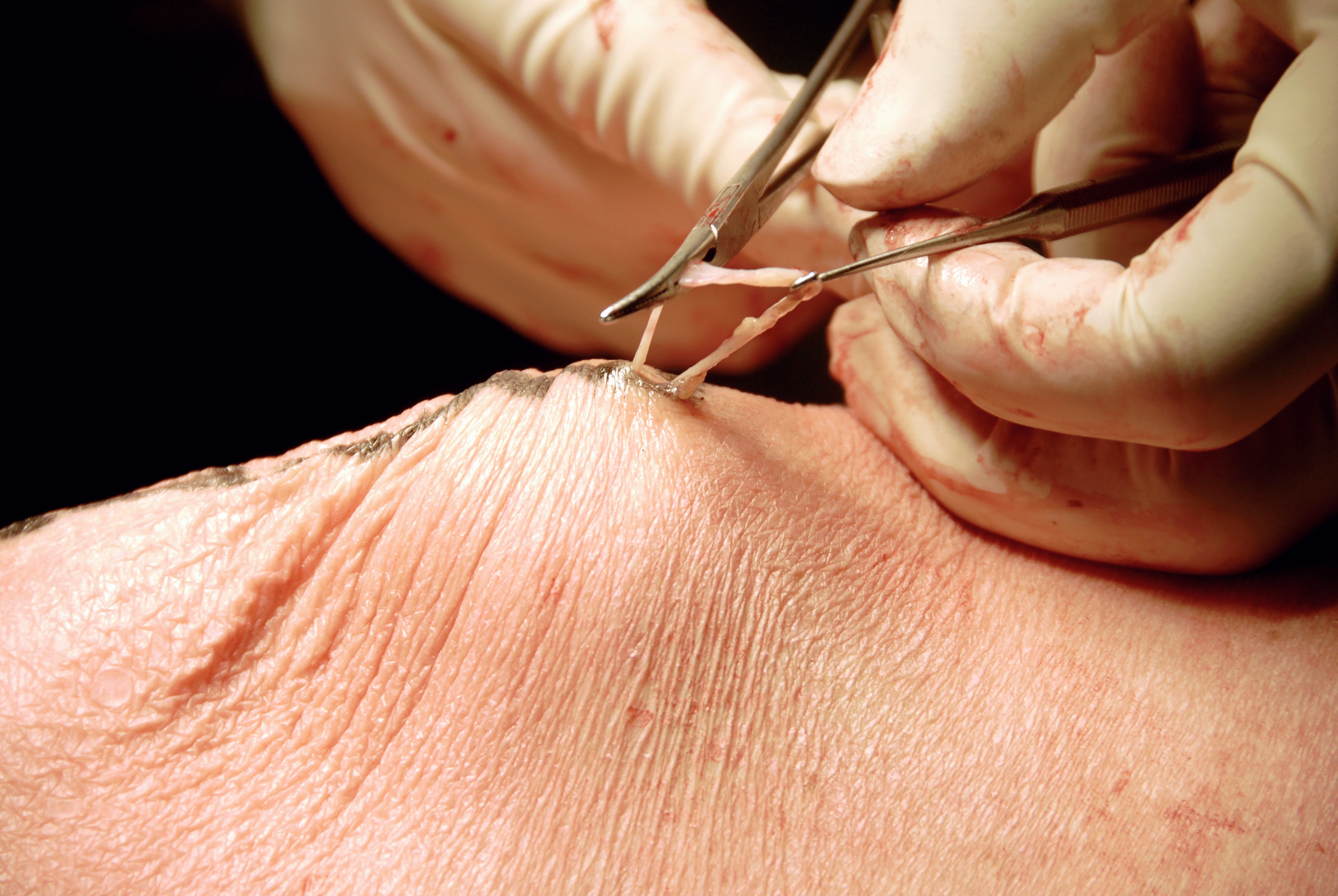Ambulatory Phlebectomy
This relatively minor surgical procedure is often conducted at the same time as a laser or radiofrequency ablation. Ambulatory phlebectomy is performed by making tiny incisions that rarely ever require stitches. The bulging vein is then extracted through tiny puncture incisions. After the vein is removed, a small bandaid is placed over the incision, and a compression bandage is applied. As with our other methods, the body will naturally reroute the blood supply to other healthier nearby veins.
When is ambulatory phlebectomy used?
Ambulatory phlebectomy treats tortuous varicose veins and tributary veins off the main great or small saphenous vein. Ambulatory phlebectomy is most often utilized for varices (abnormally dilated blood vessels) below the knee in the calf area. In the calf, the saphenous nerve is near the saphenous vein, and in the mid-calf, the nerve moves away from the vein. Damage to the saphenous nerve causes some brief numbness, so to avoid injuring the nerve, phlebectomies or ultrasound-guided foam sclerotherapy is often used as an adjunct to endovenous ablation. Phlebectomies are also commonly used to treat tortuous veins on the side anterior or lateral aspect of the thigh.
What should I expect from ambulatory phlebectomy?
Ambulatory phlebectomy is a minor surgical procedure performed in an office-based, outpatient setting using local anesthesia. Complete surgical removal of varicose veins segments may be achieved in a single session or in separate sessions depending on the location and how extensive the network of veins is. Because they heal quickly, the small slit-like incisions should be nearly invisible after six-to-twelve months. Recovery time is immediate; however, temporary bruising or swelling may occur after the procedure. Walking after this surgery is encouraged, and a post-operative bandage is kept in place for 24 hours before being replaced with daytime compression stockings for one-to-two weeks.
What results are achieved with ambulatory phlebectomy?
Around 90 percent of patients achieve long-term success, although new varicose veins can develop in the future in different locations, as with any other vein disease therapy. Some patients may experience some tenderness over a treated vein due to trapped blood. This is treated in the office by removing the trapped blood under local anesthesia.
What should I do after my ambulatory phlebectomy to ensure vein health?
Exercising, maintaining healthy body weight, and avoiding prolonged periods of sitting or standing will help ensure your vein health following ambulatory phlebectomy. If you notice any new veins or your condition isn't improving, contact your Center for Vein Restoration doctor.
